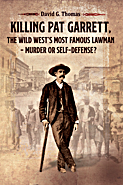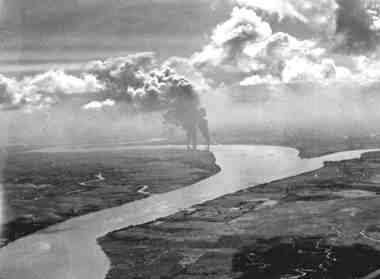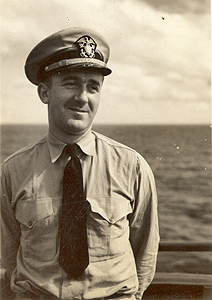|
|
||||||||||||||||||||||||
 |
||||||||||||||||||||||||
|
|
||||||||||||||||||||||||
|
||||||||||||||||||||||||
|
|
||||||||||||||||||||||||
 |
||||||||||||||||||||||||
 |
||||||||||||||||||||||||
 |
||||||||||||||||||||||||
|
|
||||||||||||||||||||||||
|
|
|
|
Saigon Takes Its Toll: A Follow Up |
|
This article describes the results of my further investigations into the deaths of VT-4 members Lt(jg) Donald A. Henry and Ellsworth A. Shirley, ARM2/c. The details of the strike during which they were shot down is given in Chapter 23 of my book, Torpedo Squadron Four: A Cockpit View of World War II. On January 12, 1945, aircraft from the USS Essex participated in a series of strikes on Japanese shipping and shore targets in Saigon Harbor, French Indo-China. STRIKE BAKER, launched at 1330 hours, was under the leadership of Torpedo 4 Executive Officer, Lt. Lee L. (Ham) Hamrick. One of the torpedo planes from our squadron failed to return to the carrier. This Avenger was flown by Lt(jg) Donald Augustus Henry with Ellsworth Abbott Shirley as turret gunner. |
 |
|||
|
Strike on shipping along Saigon River in French Indo-China. |
|||
|
Fifty years after the strike on Saigon, the fate of Henry and Shirley has finally been revealed. The chronology of these events follows. The official report from the Naval Operations Archives in Washington, DC states: "As aircraft retired, Lt(jg) Henry called the flight leader stating that he had not released his bombs and requesting permission to make another run. The flight leader suggested a target, but his message was not acknowledged. No more was heard from the plane. It is not known what target Lt(jg) Henry attacked." (Note: On return to base a TBM from another carrier joined up making correct count. Hence, plane was not noted missing until well after departure from target.) Since Ham was leading this TBM flight, I asked him to describe what happened. He stated, "D. A. called and said his bombs did not release, and he was going back. I told him not to go back—to wait for fighter cover! But, he broke off anyway and went back toward Saigon. We never heard any more, but I assumed he dropped and rejoined the group." Allowing ample time for Don Henry to return to the carrier, the USS Essex made
When we reached the States in April, 1945, I went home on leave. Jean Ellis, my fiancée, and I went to see Don Henry's Father, Claude. He was a farmer near Drummond, Idaho and was Don's closest living relative. My intent was to assure him that Don was in the hands of the Free French in Indo-China and had a good chance of getting back to the States. Jean stayed in the car while I went to the door of the farmhouse. When Don's Father opened the door, I told him that I was from Torpedo 4 and I wanted to talk to him about Don. Before I could say more, he started cursing. "Who in the hell is this guy Hamrick? Let me show you a letter he wrote about Don. I'll be damned if I can understand how anyone could write this kind of a letter. He says, 'We all envy Don because he went down in an area where there was a good chance for survival.' How could anyone say he 'envied' a man shot down in enemy territory, a thousand miles from our nearest land base in China?" Claude Henry kept on ranting about Ham's letter. I was so taken aback that I didn't know how to respond. What Ham was trying to say was that if Don had to go down, French Indo-China was better than most other places where we were headed—Tokyo, for example. Ham was trying to be encouraging; instead, his intent was misunderstood. It became obvious that my trip to Drummond to reassure the family was not going to succeed. I returned to the car, report to Jean the unexpected response to my visit, and we drove home disappointed. When Ham heard about my meeting with Henry's Father, he said, "That was a poor choice of words on my part. I did not realize they would not understand. I'm sorry." No further word was received about D. A. Henry until the war ended. In December, 1945, I picked up a copy of the Idaho Falls Post and saw Henry's picture. The article stated that when Don found that his bombs had not released, he: "Radioed for permission to fly back over the target to see if the bombardier could get the bombs to release. Permission was granted and when they returned, all enemy fire was concentrated upon them resulting in their being shot down. Lt Henry made a perfect landing in a small clearing in the jungle, but discovered that their bombardier had been killed by enemy fire." The Idaho Falls paper further stated that the family had been notified that Don had been killed by the Japanese, when he and an Army sergeant were "betrayed in their hiding place by the French Indochinese." We heard that Don had pulled a gun and the Japanese patrol shot him on the spot. "Sgt Quinn was taken prisoner and just recently returned to the US, where he told his story to Navy personnel, who informed the family about how their son met his death." This article stated, "Lt. Henry was killed on April 26, 1945." He was awarded the Air Metal posthumously. Don had received the DFC for earlier strikes. Since Time magazine correspondent Robert Sherrod was on this flight (in Lt B. R. (Trex) Trexler's plane), he took a special interest in trying to trace the events that led to Henry's capture and death. He concluded that Henry, after several weeks, joined up with 6 crew members of a PBM, which had made a crash landing January 26, 1945 at Quong Ngai: "Somehow they found their way to the primitive Moi village of Petonang, in the mountains North of Saigon. There on the morning of 12 March 1945, two months to the day after Lt Henry was shot down, they met their fate at the hands of a cruel and remorseless enemy…. After accepting their surrender the Japanese commander ordered them to kneel, tied their wrists together, shot them in turn, then kicked each backward into a shallow grave." More recently, I have learned that an American, Martin L. Mickelsen, and a Frenchman, Jean-Claude Surleau, (who was in Saigon at the time of the Air Group 4 strike) are conducting research on the Saigon strikes of January 12, 1945 with particular attention to the fate of those airmen who were shot down. Task Force 38, as a whole, lost 16 planes--2 from the USS Essex. The French report concerning the fate of Lt(jg) D. A. Henry, as translated by Mickelsen, states: "The seventh (Lt Henry) injured with grave burns was assigned for six weeks at Mythos, then to a plantation at Loc Ninh. He found a glorious death in the month of April, 1945, fighting at the side of the French resistance. Finally, the body of E. A. Shirley, found among the debris of his machine, was previously interred at the French cemetery of Saigon." On June 3, 1992, I drove to Drummond, Idaho to try to contact any surviving relatives of Lt(jg) Don Henry. Drummond, Idaho is essentially a ghost town today, with about a half-dozen occupied homes. The only surviving business is a bar. I ordered a beer while I quizzed the lady bartender about the Henry family. She said that there was no longer a Henry farm. The only Henry she knew lived a short distance away in Ashton, Idaho. I borrowed a phone, called Ashton, and received an invitation to visit Mrs. Kenneth Reiman Henry (Bee), who was Don's sister-in-law. Mrs. Henry stated that Don's Dad and Brother, who were alive while Don was in the Navy, had since passed away. Her story of Don's fate was somewhat different from the one reported in my book—more along the lines of the news release I quoted from the Idaho Falls Post. I asked Mrs Henry if she had any of Don's letters or mementos. She brought out a very small collection of items, including an Air Medal, and the news releases to the Idaho Falls Post. Included with these materials was the controversial letter that Ham had written to the family 2 days after the strike on Saigon. I guess Don's Dad and Brother were particularly upset over the following statements from Ham's letter: "I believe there isn't any cause for worry about his predicament. No doubt it will take considerable time to get back into American hands…. Tracking across Asia will be quite a novelty…." In the letter, Ham also recounts the circumstances leading to Don's crash landing. This account is essentially as recorded in Chapter 23 of Torpedo Squadron Four: A Cockpit View of World War II, all that I knew about the events at the time. Martin Mickelsen has continued research for a book he is preparing on French Indo-China. Under the date of December 21, 1994, he adds additional information concerning the final fate of Don Henry and E. A. Shirley. Part of this account comes from and Escape and Evasion (E&E) report by Marine Lt Joseph A. Lynch, an USS Essex pilot from VMF-124, shot down during a fighter sweep near Trang-Bang, French Indo-China on the same day (January 12, 1945. See Chapter 23 of my book for details). Lynch believes that Don Henry, who was badly burned, misunderstood the native rescuers as they reached the crash site. Lynch's E&E report states: "The thumbs-up signal has a different meaning in this vicinity, in that instead of meaning that 'everything is all right,' they count on their fingers and mean the 'count of one.' This has caused confusion and in one instance resulted in the death of a TBF radioman. The latter instance occurred when a TBF pilot, who crash-landed near Saigon, misunderstood the signal of his native rescuers, thinking that they meant everything was all right and that they would take care of his plane, and when he nodded his head, they thought that to be the case, all the time escorting him away from the scene of the crash. After a lapse of time, when they realized their misunderstanding, they returned to the scene, but too late. The Japs had been there and the radioman's body was found a short distance from the plane." E. A. Shirley had told T. R. Sims the night before the strike on Saigon, "I'm not coming back from this trip." He died a hero in the line of duty. During his research, Martin Mickelsen located Ens William A. Quinn, who was with Don Henry at the time he was killed by the Japanese. (Note: The Idaho Falls news release erroneously reported that a Sgt Quinn was Don Henry's radioman.) Ens Quinn was one of 2 survivors of a crew of 11 Navy reconnaissance fliers shot down off the Indo-China coast on January 26, 1945. Quinn's account of the fate of Don Henry follows (as recorded by Mickelsen): |
|
|
The following account is from the American Graves Registration Service: "In compliance with par. 3, preceding endorsement, it is advised that the positive identification of Common Grave Unknown X275 has been established by the headquarters. Bag-D Henry, Donald Augustus, 173471, Lt(jg) USNR. Next of Kin: Claude Henry (Father), Drummond, Idaho. Remains were recovered from a mass grave in the Moi village of Tanang, French Indo-China and reinterred in Plot 3, Row 5, Grave 20 at the US Military Cemetery, Barrackpore, India. Under date 26 July, the American Grave Registration Service sent this memo to Washington, DC: "(a) Our Search and Recovery Team at Saigon, while proceeding to recover the remains of Lt Donald Augustus Henry and six others reported to have been buried 20 miles North East of Dak Bla [Dak Gla], were ambushed by Annamites and the mission was not successful. (b) The remains of Ellsworth A. [Abbott] Shirley, 203-67-83 ARM/2C, USNR, has been recovered from European Cemetery, Saigon, and will be buried at the United States Military Cemetery, Barrackpore, India." Addendum from Leo S. Leach (VT-4): "E. A. Shirley was from my hometown, Syracuse, New York. I started 3 times to see his parents on my 30-day leave, but was too much of a coward to see them. One day they came to my house to visit me. I would say they were a very brave set of parents. We had a very long talk and I went to their house for dinner. After a number of years, Shirley's remains were transferred from India to the family plot in New York." |
|
Air Group 4 - "Casablanca to Tokyo" |
|||
|
|
|||
